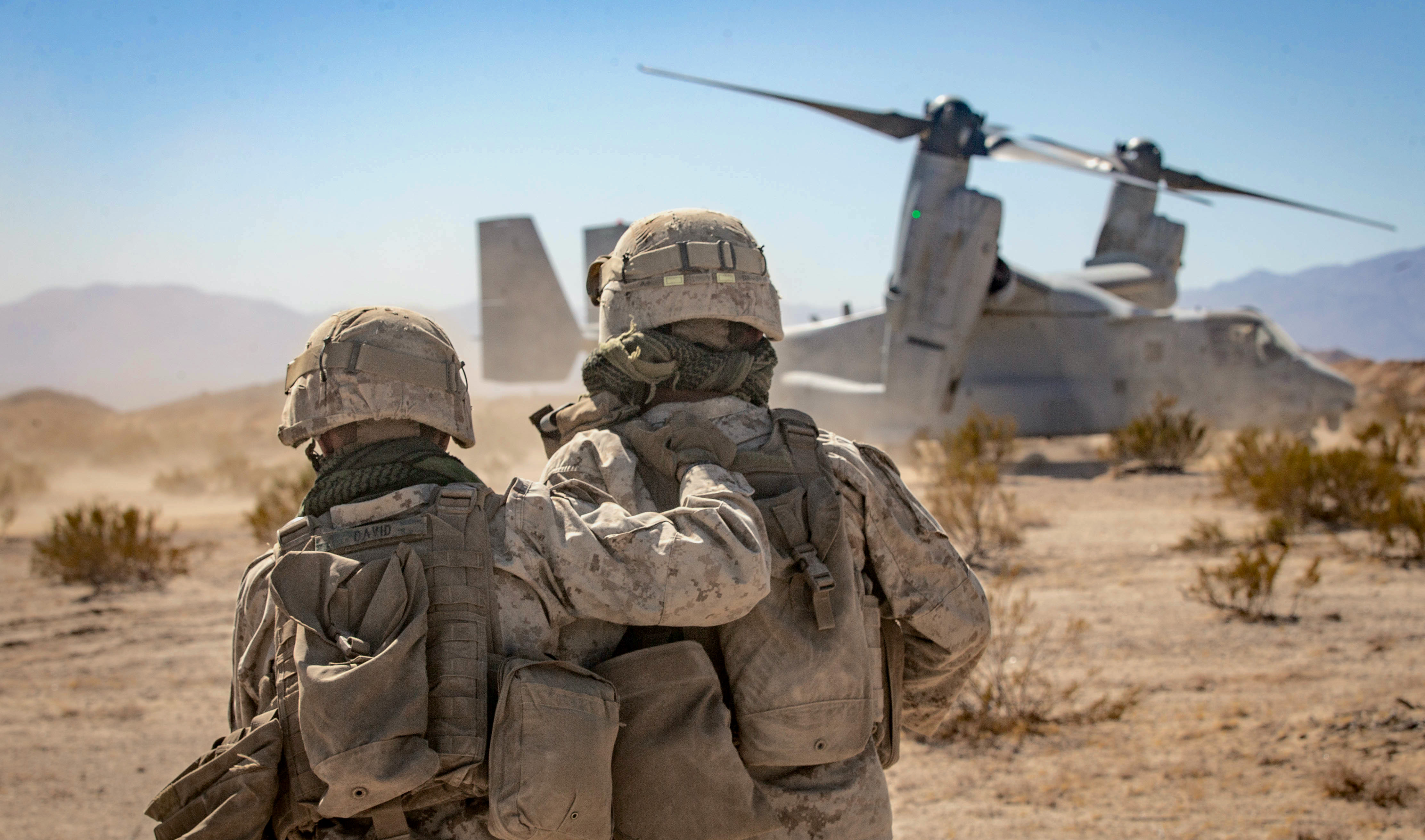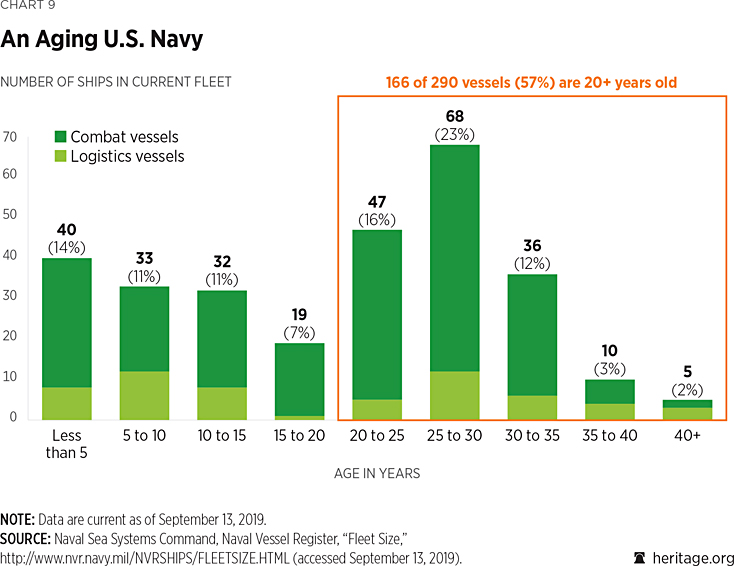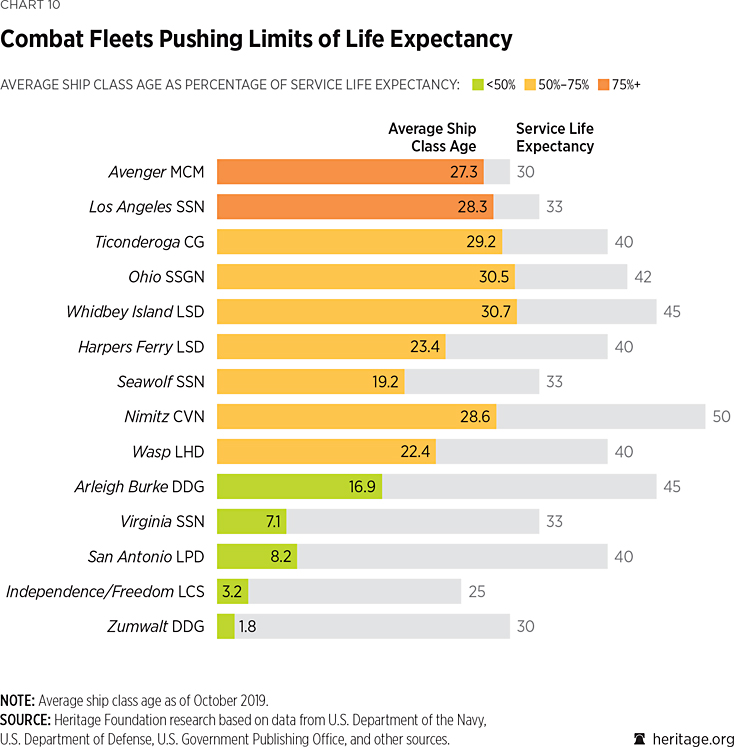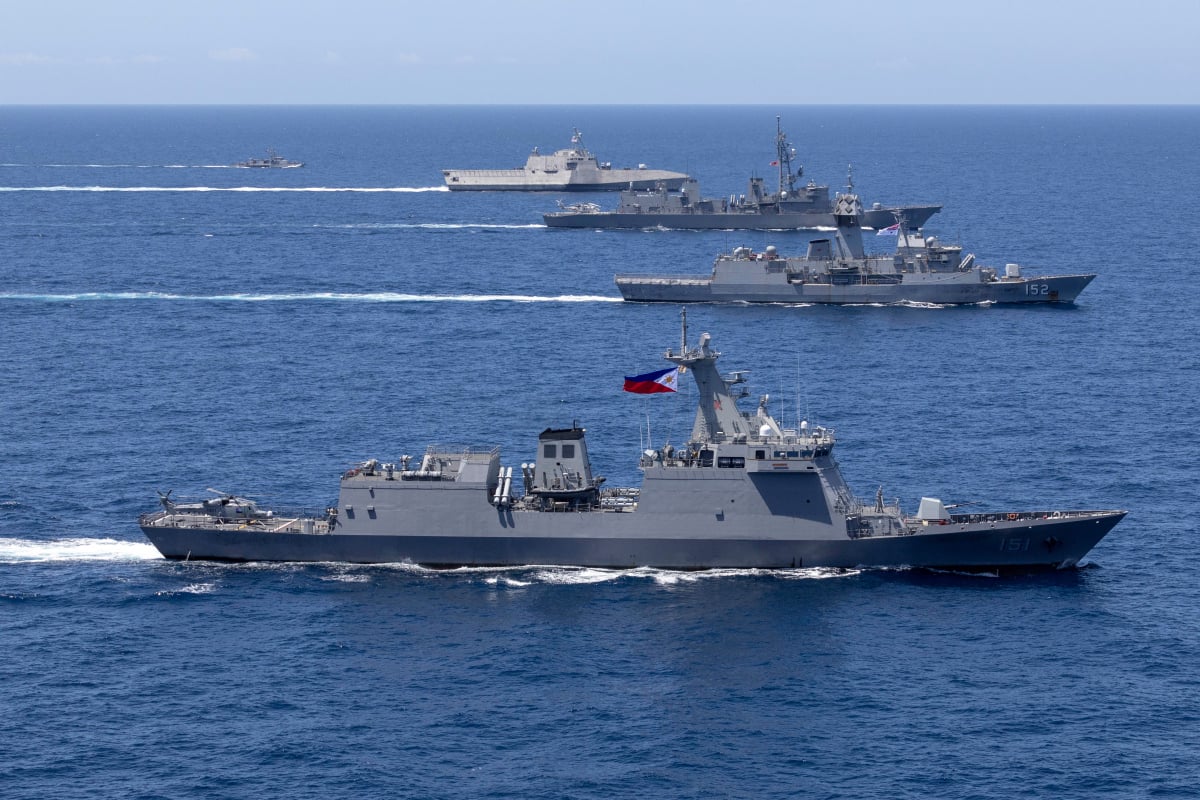
The Navy and the Marine Corps have been assessed as “marginal” in their ability to meet the challenges from rival powers in Beijing and Moscow, as well as regional threats coming from Tehran and Pyongyang, according to annual report on U.S. military strength from The Heritage Foundation.
The rating for the Marine Corps was an improvement over last year’s assessment of “weak” as part of the 2020 Index of U.S. Military Strength. That rating and the sea services’ commitment to improving readiness across the board were among the few examples in the Defense Department of improvement from last year’s assessment.
The annual assessment weighs military strength and the operating environment American forces would most likely operate in: Europe, Asia and Middle East. There are five tiers to assessing the strength: very strong, strong, marginal, weak, very weak.
“We think we have a one-war force” in explaining how the index judged the strength of the individual services and Pentagon capabilities, like nuclear deterrence, against what would be required to meet the requirements to successfully engage in two major regional conflicts almost simultaneously, Dakota Wood, a senior fellow at Heritage, said on Wednesday. Not included in the Index are logistics, medical support, etc.
“We look at hard combat power,” Wood said.
Describing the overall picture of American military strength as “marginal,” Wood said,
“we chose that word intentionally” in assessing the United States had the capacity and capability to meeting the Pentagon’s former stated goal of having enough forces to sustain two wars simultaneously.
The 2018 National Defense Strategy does not address the possibility of two major regional conflicts at the same time, the co-chairmen of a commission assigned to review it told Congress.
“Budget constraints are a big deal” and they have an effect on what can be done now and future including DoD investments in artificial intelligence, advanced manufacturing, hypersonic weapons and other future technologies.
“Modern technologies are kind of a leveler,” he said, noting that $13-billion aircraft carriers remain vulnerable to anti-ship cruise missiles that cost a bare fraction of the vessels. “Our competitors have really been muscling up.”
The report this year discusses the need to increase the number of Marine infantry battalions above 24 to “the mid-30s” to reduce the pressure of constant deployments with little time at home for Marines, he added. It would also mean the “almost exclusive focus on the Indo-Pacific” of the Marine Corps’ current posture could be adjusted to address conflicts in other regions, read the report.
“Despite an increase in manpower, the Corps continues to operate with less than 67 percent of the number of battalions relative to the two major regional conflict benchmark,” read the report. Based on that decficit, Hertitage scored Marine Corps capacity as “weak.” The authors noted that to meet the needs of Operation Iraqi Freedom, 66,000 Marines were deployed to that mission. In addition, about 27,000 more Marine were assigned to the region at the time.
More battalions also can translate into a “ready bench,” in the report’s phrase, to a host of contingencies that are not directly connected competition with China and Russia.
For the Marines, Wood said the importance of “adjusting ship architecture” with the Navy over what kind of vessels will be needed in the future cannot be overlooked.

Marine aviation, “has been particularly stressed by insufficient funding” noticeable in troubling readiness rates of its F/A-18 squadrons. While introducing “the F-35 platform into the fleet … the F/A 18 Hornets remain ‘the primary bridging platform’ [to that end and] will remain the force until 2030.”
The U.S. Navy’s fleet size is a concern to meeting the challenges posed from the Chinese with the Peoples Liberation Army-Navy at 300 ships and the China Coast Guard at 175.
The report envisions a 400-ship fleet to meet the Navy’s existing global requirements, but recent statements from service leaders indicate that a 355-ship fleet may become a “nice target” as the goal is outside the range of affordability with current ship budgets.
Following two deadly collisions in 2017, Wood said, “the Navy has gotten serious on training sailors” on their seamanship skills and that is reflected in the assessment. “But it will be several years before they can fully change the culture and raise the level of the fleet’s overall professional knowledge and experience,” he said.

The report also noted the impact of so much delayed maintenance on a fleet that is “used harder and is aging,” Wood noted. He said 57 percent of the American fleet is 20 years old or older; and the newer ships tend to be smaller vessels, such as the Littoral Combat Ships. The report said without the necessary increased and sustained funding to meet recapitalization requirements and “improvements in shipyard maintenance capacity, the readiness of the Navy’s fleet will remain compromised.”
The impact of all this creates “a kind of death spiral” of readiness, especially among heavier vessels like aircraft carriers and cruisers for surface vessels. The delay and time in shipyards for needed repairs “are very problematic.”
 The Navy needs “about a 30 percent increase in their shipbuilding accounts” to account for the impact of developing and building the Columbia class ballistic missile submarine and the Ford class aircraft carrier that would allow other classes of ships to be designed or modernized.
The Navy needs “about a 30 percent increase in their shipbuilding accounts” to account for the impact of developing and building the Columbia class ballistic missile submarine and the Ford class aircraft carrier that would allow other classes of ships to be designed or modernized.
“There are warning clouds of the horizon,” he said about the shipbuilding accounts. The study said the limits on the shipbuilding accounts even with the current budget agreement for the next two fiscal years “will make it extremely difficult for the Navy to increase capacity and field new lethal capabilities in the near term.”





